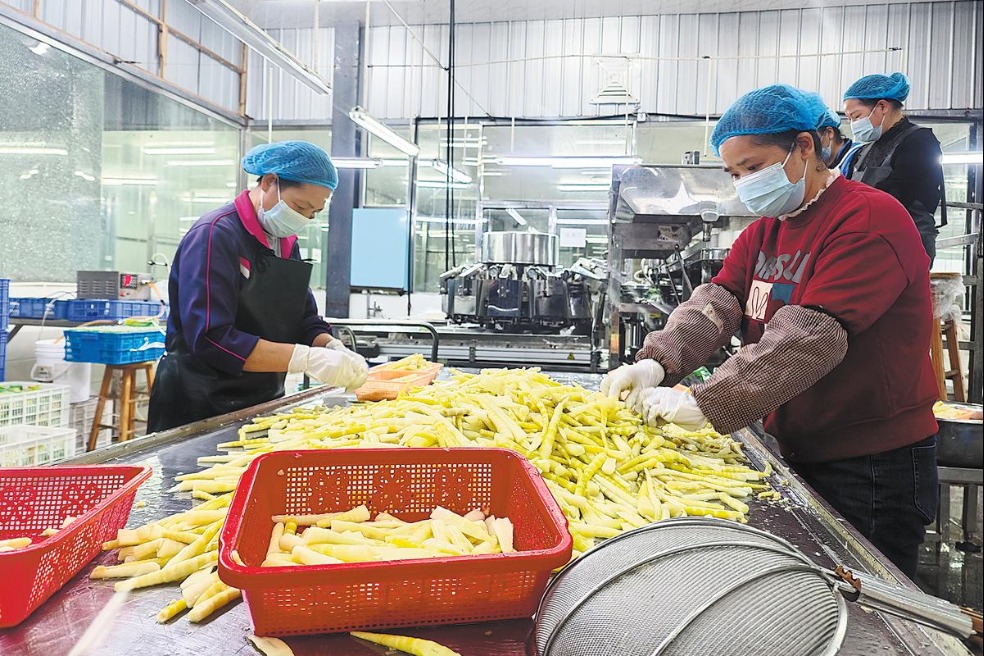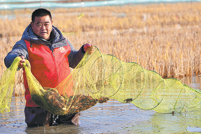All aboard for a 3,000-year journey
In the city of Anyang history is the big drawcard. Make no bones about it, Xu Lin reports.

When you step off the train in Anyang you step back in time.
The city, in Henan province, is a cozy place where accommodation is cheap, dining affordable and taxi fares low. But leaving the ordinariness of modern life behind, the visitor will soon be able to survey some of the city's glorious past, for it is one of China's eight ancient capitals, and in it there are ruins and relics that date back as much as 3,000 years.
It sits on the borders of Shanxi and Hebei provinces, and its central location puts it within a few hours by fast train of many Chinese cities, for example two and a half hours from Beijing and three hours from Wuhan and Xi'an.
Anyang's provincial city cousins Zhengzhou and Luoyang may boast that they can pull in bigger crowds during holiday periods, but it is this very fact that makes Anyang, which was the capital city during the late Shang Dynasty (c. 16th century-11th century BC) such an attractive alternative.
The city has just got a little more attractive because the Henan government announced recently that visitors to 432 A-level scenic areas in the province would not require entrance tickets between Oct 10 and Nov 10, including all of Anyang's 35 A-level scenic spots. However, if you wish to take advantage of this you'll need to be quick, because the exemptions can be granted only on advance reservations.
In Anyang a hearty breakfast is essential before undertaking a day trip, which is likely to take in the 3,300-year-old Yinxu Ruins. These are one of China's best-known archaeological sites and were added to the UNESCO World Heritage list in 2006. It was here that the earliest known Chinese written characters were excavated.
Sacrificial culture and divination practice prevailed in the Shang Dynasty, so be prepared to see large sacrifice pits with a human skeleton, in many cases those of slaves or prisoners, and animal skeletons as well.
Diviners in the Shang Dynasty chiseled small holes and notches on tortoise shells or ox scapulae, and put them on a fire for a while, reading the burned cracks as omens and making use of them in divination.
Diviners also verified whether predictions came to pass and etched the whole process of divination on the same bone, and archived valuable oracle bones.
In 1936 more than 17,000 pieces of oracle bone inscriptions were discovered in the Yinxu Ruins, covering various topics, such as sacrifices for ancestors, hunting, the weather, harvests and diseases.
The pit where these bones were unearthed can be seen, containing a human skeleton believed to be of those in charge of the bone archives, akin to modern librarians.
These oracle bone inscriptions frequently mention Fuhao, China's first female general and a wife of King Wuding of the Shang Dynasty.
She seems to have been an exceptionally versatile and independent woman. She had her own fief, was in charge of conscription, won fierce battles, hosted sacrificial rituals, served as a diviner and bore Wuding's children.
He often consulted diviners on Fuhao's health, how she would handle the birth of a child and whether she would win in battle. When she died in her early 30s the grieving king sought news of her in the underworld and made the appropriate sacrifices.
Words of divination carved on oracle bones that are a testament of his love for her have survived the vicissitudes of time.
Visitors can also enter Fuhao's underground tomb. It was discovered in 1976 in the Yinxu Ruins and is the only intact royal tomb of the dynasty. More than 1,900 exquisite burial articles, including 468 bronze and 755 jade objects, have been excavated from the tomb.
The inscription "Fuhao" on more than 100 bronze items makes it clear who the tomb belonged to.
A bronze yue, or battle ax, as heavy as 9 kilograms, was one of the weapons she used in battle. There are also jade hairpins, bronze mirrors and jade ornaments of various animals. Everything points to a battle-hardened, intrepid warrior-who also liked dressing in ornate clothes.
Another tomb is where the acclaimed 833-kilogram houmuwu ding, the world's heaviest ancient bronze item, was unearthed. Some experts believe it was dedicated to another of Wuding's wives.
Today it is among the precious objects of the National Museum of China in Beijing, together with some bronze items from Fuhao's tomb.
In the National Museum of Chinese Writing in Anyang you will be able to further explore the history and evolution of Chinese characters, including exhibits of inscriptions on ancient oracle bones, bronze objects and pottery.
There are also exhibitions about written languages of China's ethnic minority groups and the development of printing techniques, such as movable type printing, one of the four great inventions in ancient China.
The Ruins of the City of Youli is the site of the first national prison recorded in Chinese history. King Zhou, the last ruler of the Shang Dynasty, imprisoned King Wen of the Western Zhou Dynasty (c. 11th century-771BC) there for seven years. King Wen's son later overthrew Shang and founded the Western Zhou Dynasty.
Legend has it that King Wen wrote part of The Book of Changes and expanded the hexagram combinations of the traditional Eight Trigrams to 64 during his imprisonment.
The book, one of the oldest classics in China, covering traditional Chinese philosophy such as dialectics, was originally used as a divination guide. Confucius was an avid reader of the book and taught his students about his in-depth interpretations of the life philosophy in it.
Another attraction is a temple rebuilt more than 500 years ago in memory of King Wen, with inscriptions on monuments or tablets by emperors and government officials during the Ming Dynasty (1368-1644) and the Qing Dynasty (1644-1911).
In a large modern maze built based on the Eight Trigrams, tourists can enjoy themselves and compete to be the first to find the exit.
Another historic site in the city is the tomb of Yuan Shikai (1859-1916), a key figure in Chinese politics in the early 20th century.
His tomb was built in Anyang based on his last will. After passing by some traditional Chinese architecture of red walls and green tiles, it may come as a surprise to find that the tomb itself was built in a Western style, with a large iron gate.
Anyang was one of the 10 most popular red tourism destinations of the first half of this year, according to a report by online travel agency Trip.com Group.
In the 1960s the local people of Linzhou spent a decade building the 71-km-long Red Flag Canal across the steep Taihang Mountains to tame the drought that had plagued them for centuries. Members of the Communist Party of China were in the vanguard.
The canal has become a well-known red tourism scenic area for visitors seeking the spirit of Party predecessors and wishing to enjoy natural beauty.
One of the must-try local snacks in Anyang is bian fen cai, referring to sweet potato starch noodles stewed with tofu, coagulated pig's blood and vegetables in a huge iron pan. The secret of its tastiness is the soup stock that is lovingly stewed for several hours beforehand.
The seller ladles the delicious food into bowels, and the diner can use garlic sauce and spicy paprika to add flavor.
A bowel of the food costs 6 yuan (93 cents) and 1.5 yuan will get you a portion of delicious thin pancakes, with soy milk a free extra. In the streets of Anyang, eateries that sell the special starch noodles are ubiquitous.

Today's Top News
- China to apply lower import tariff rates to unleash market potential
- China proves to be active and reliable mediator
- Three-party talks help to restore peace
- Huangyan coral reefs healthy, says report
- PLA conducts major drill near Taiwan
- Washington should realize its interference in Taiwan question is a recipe it won't want to eat: China Daily editorial






























